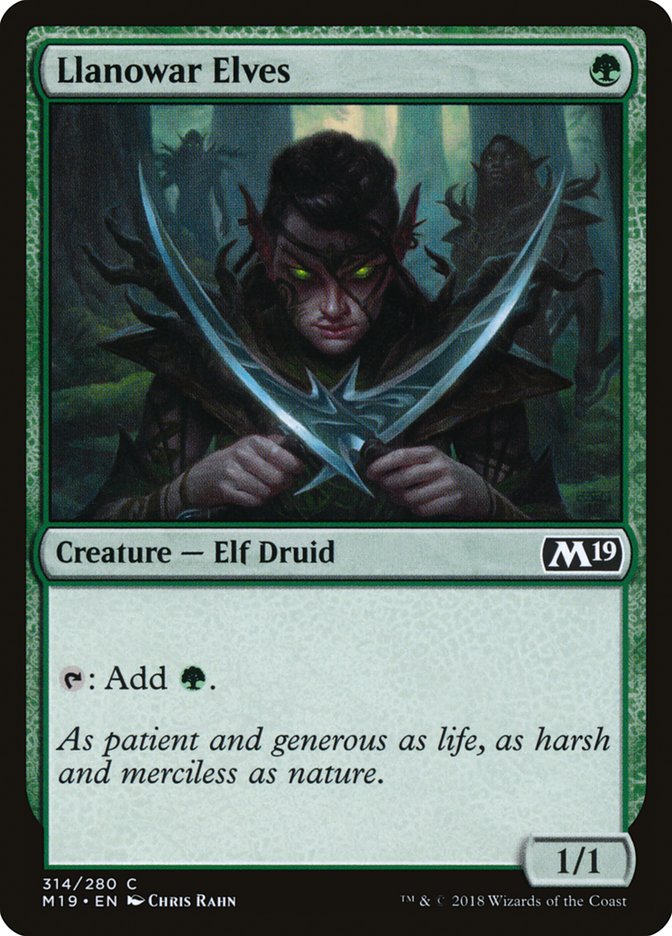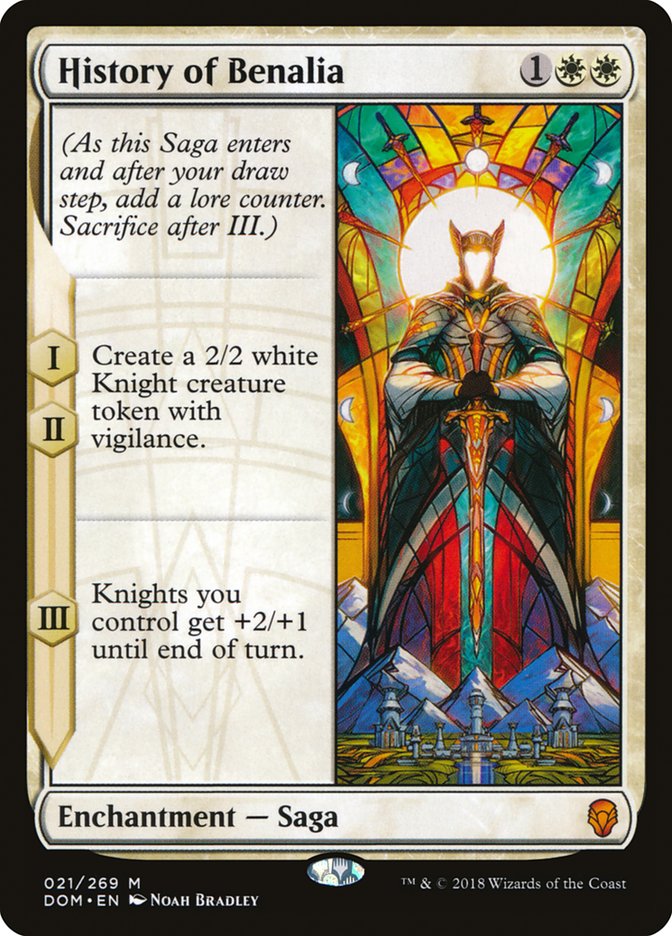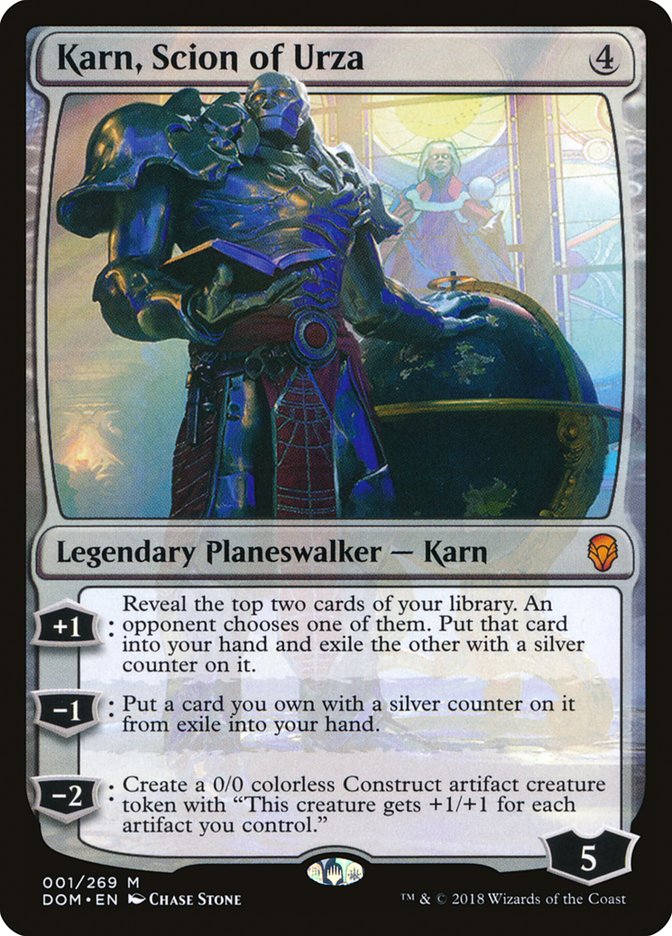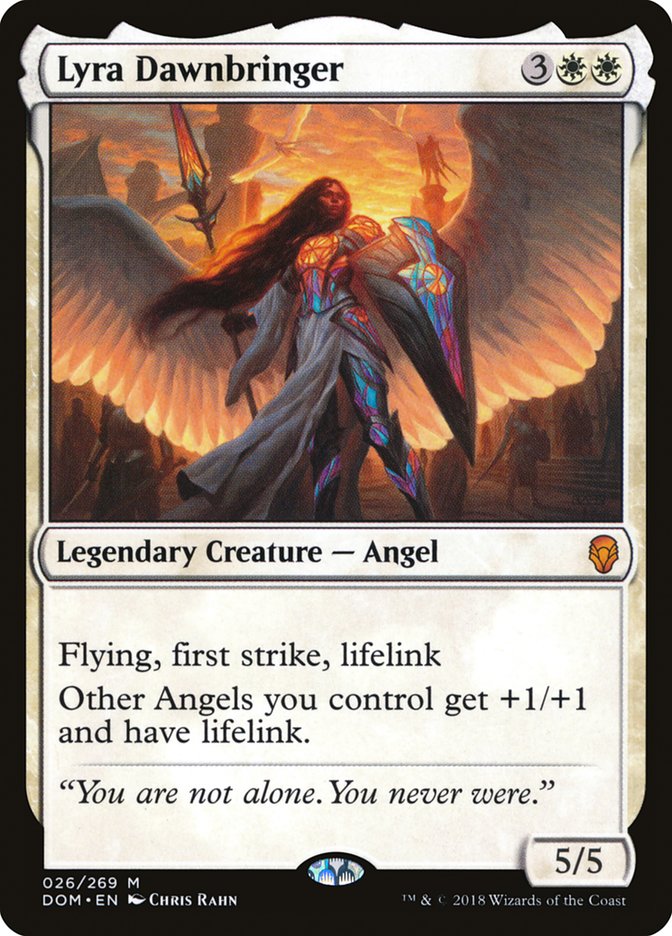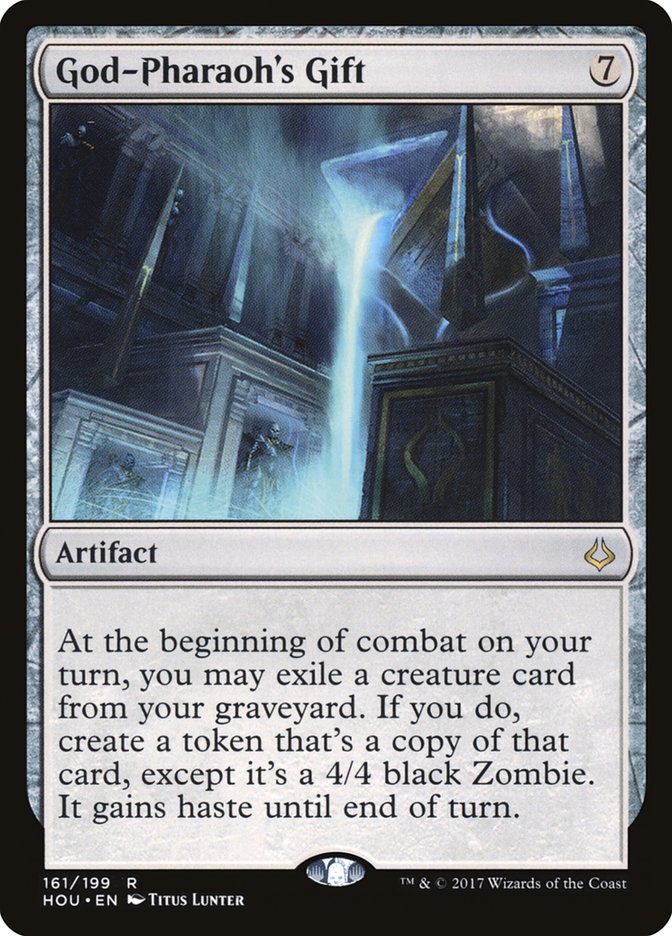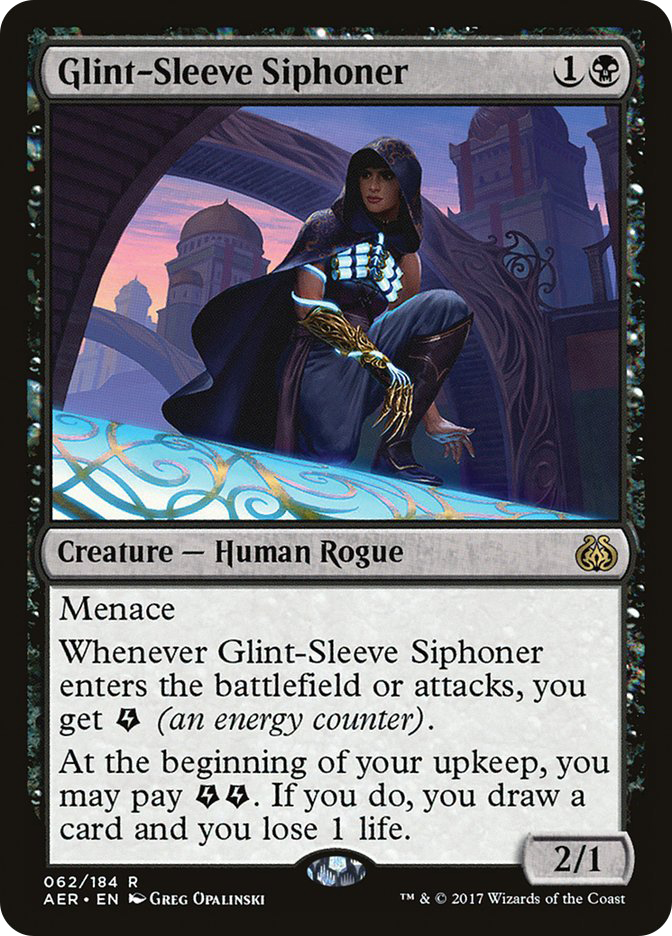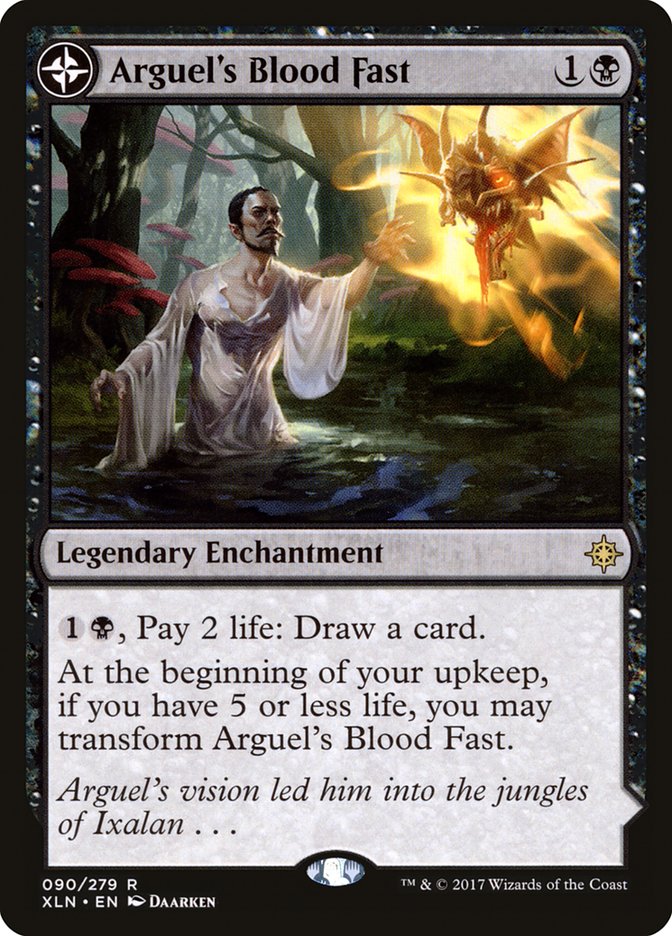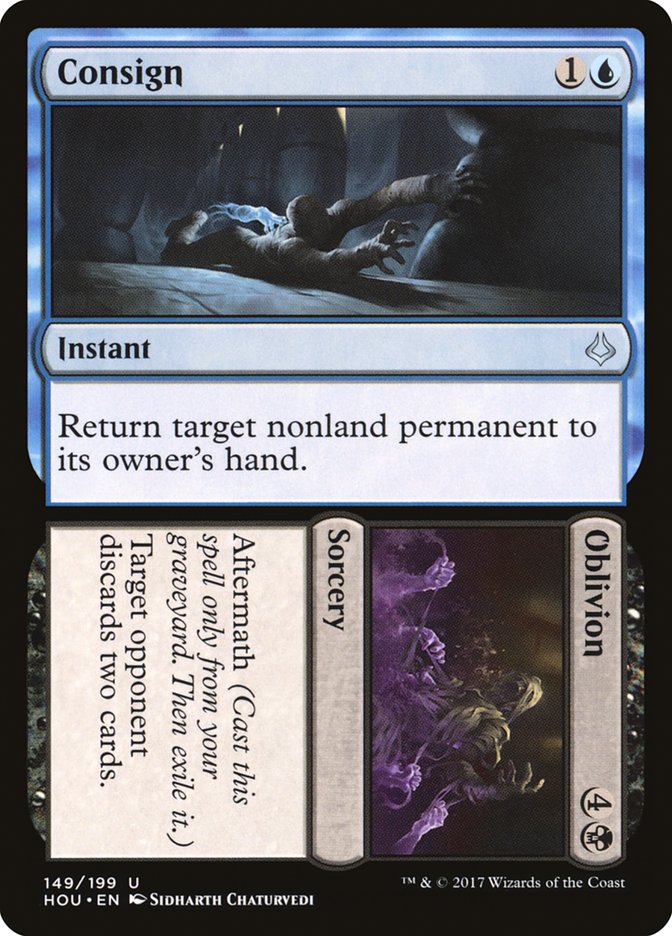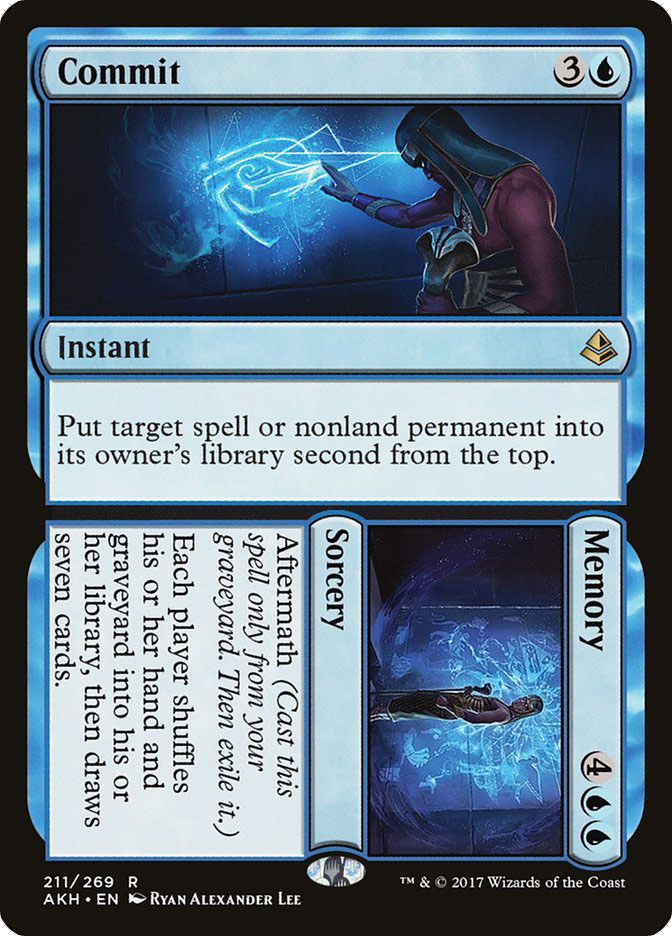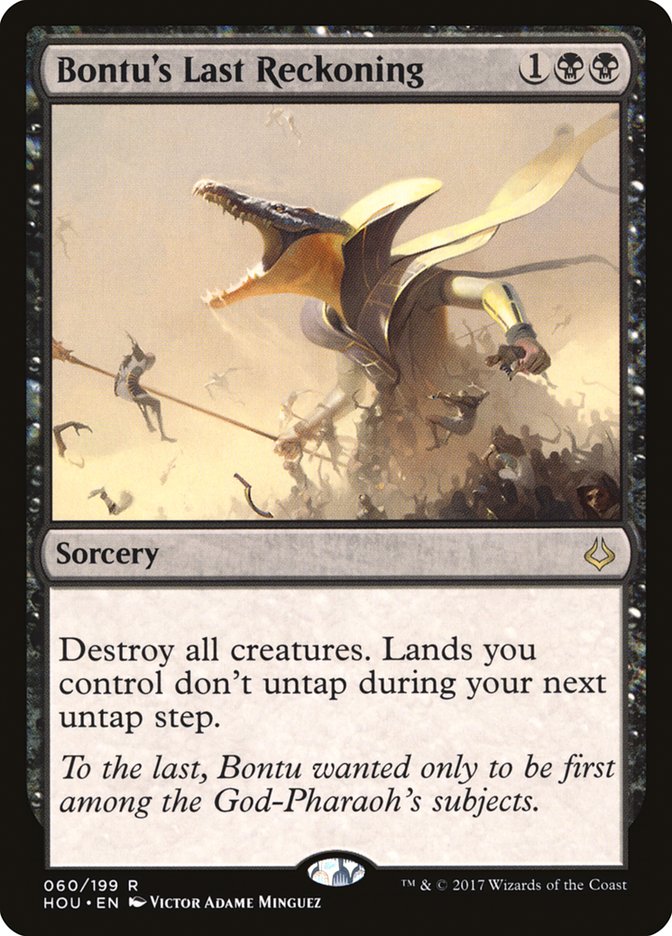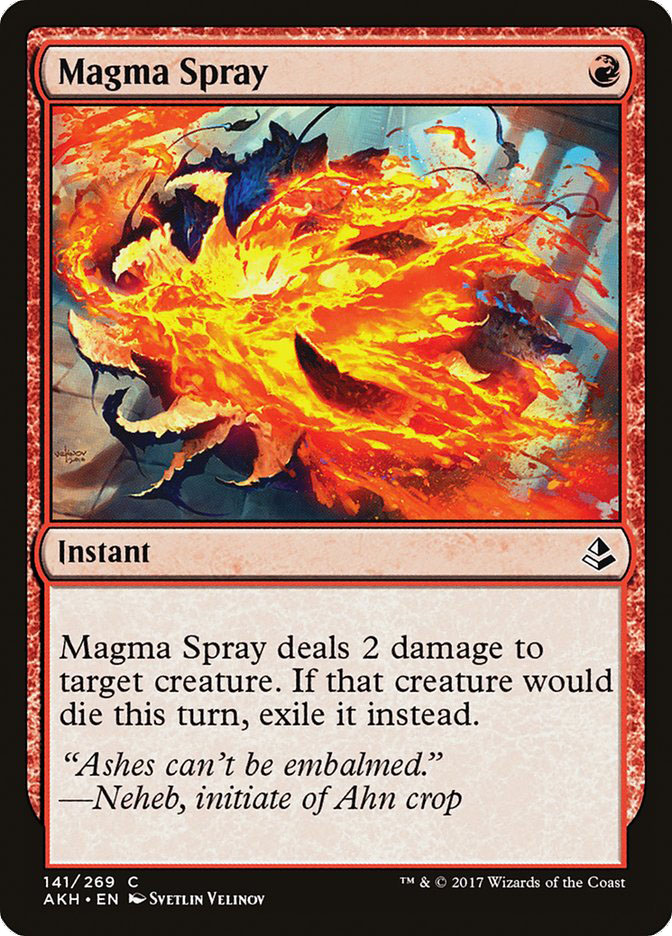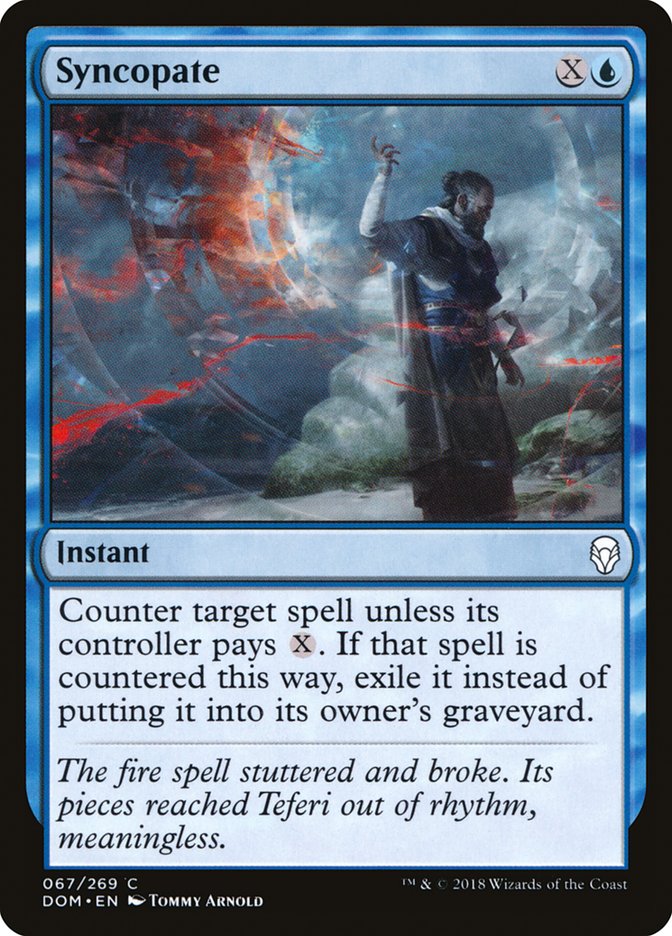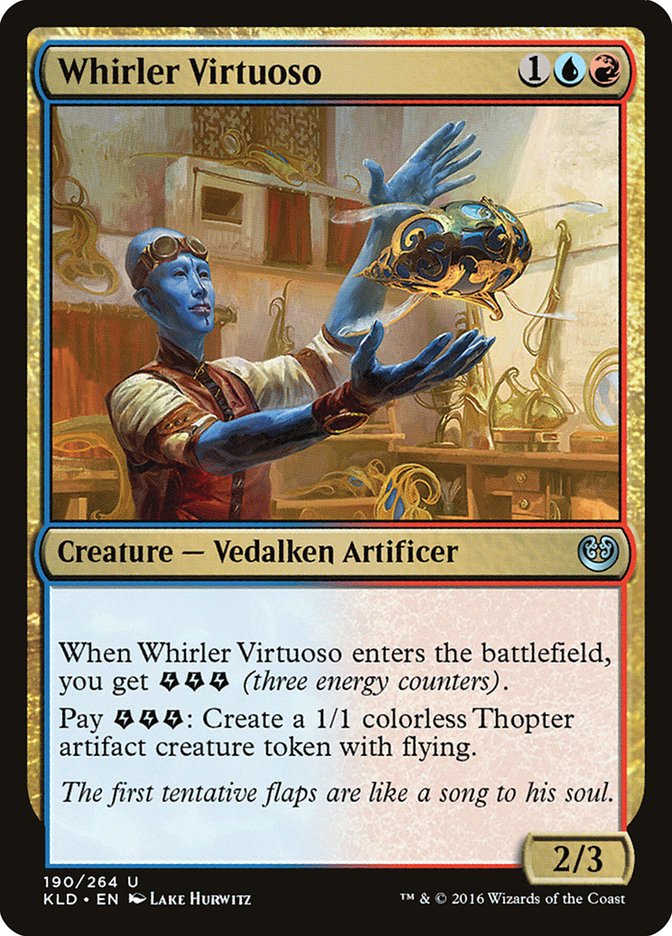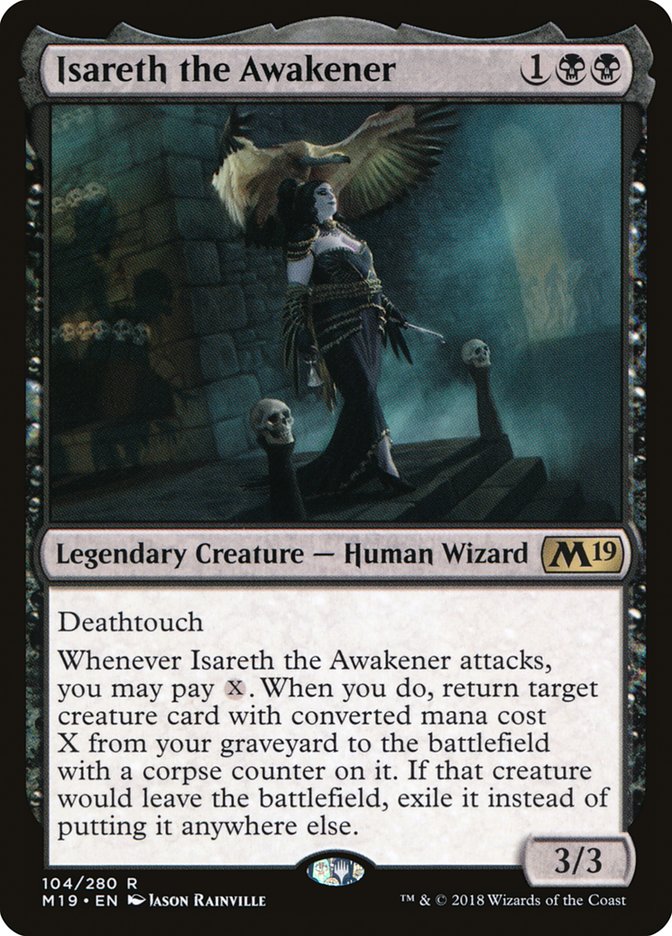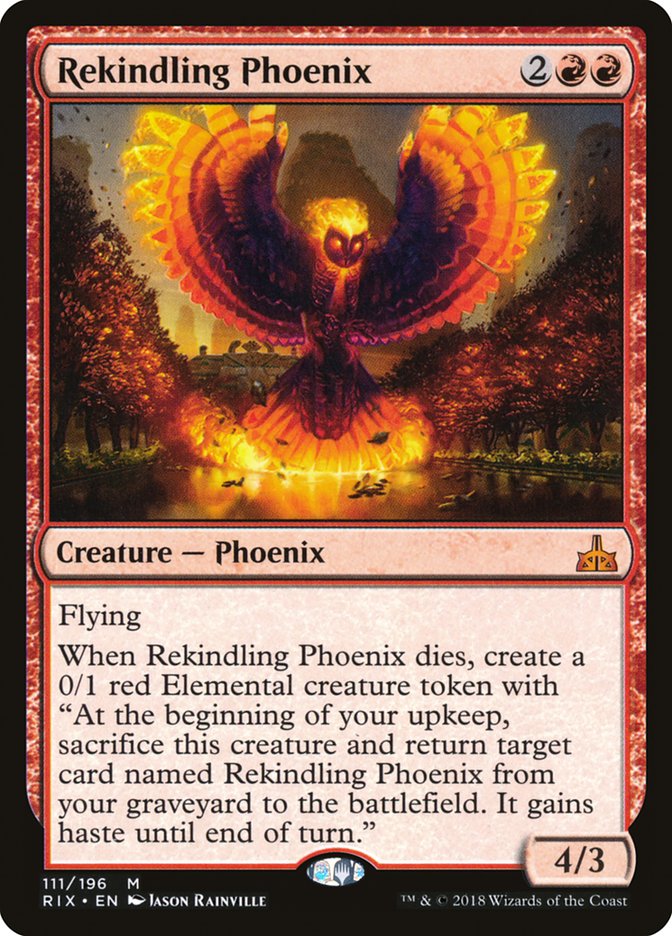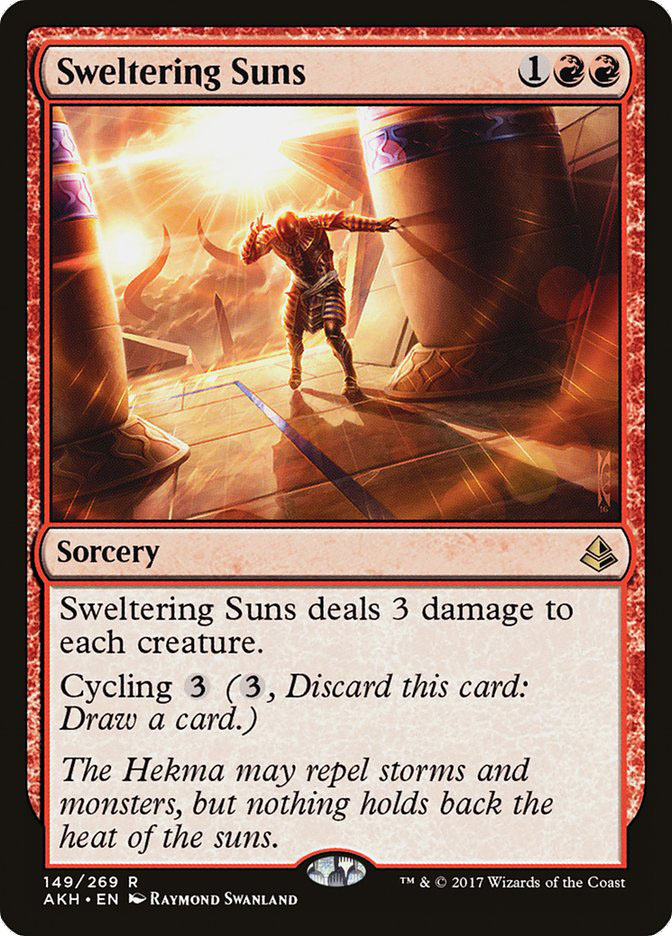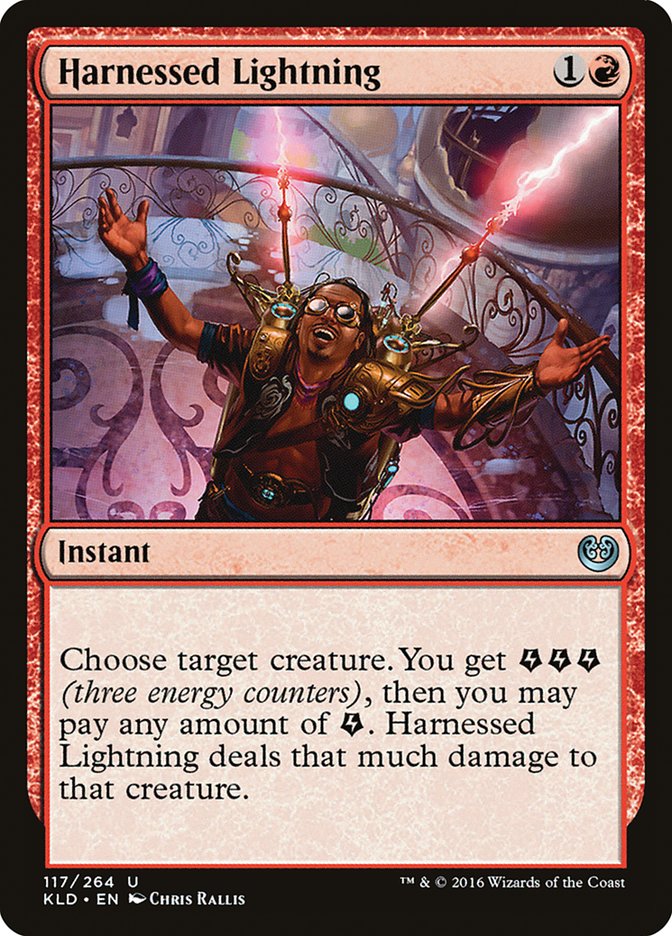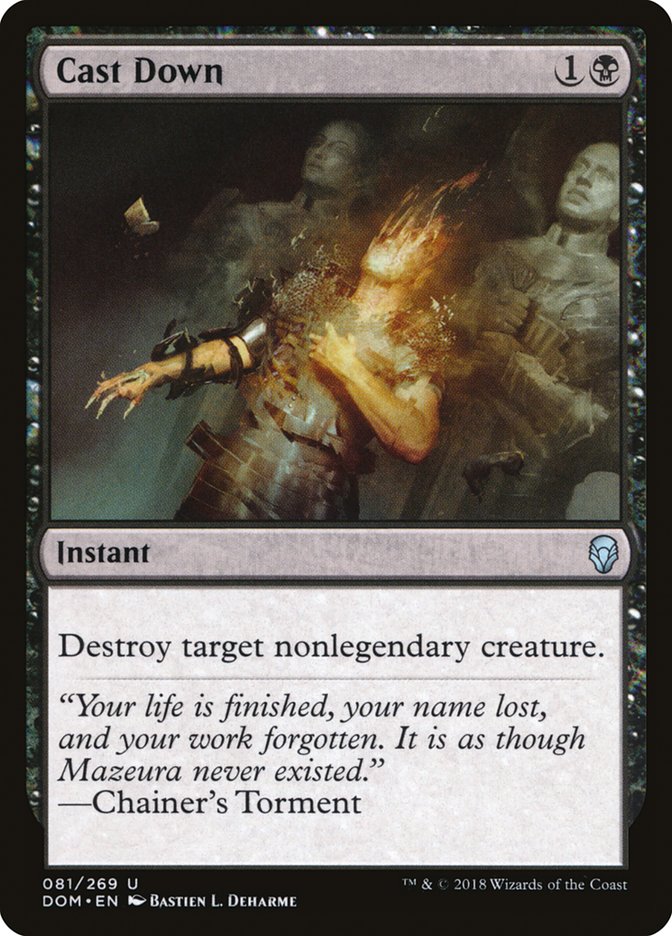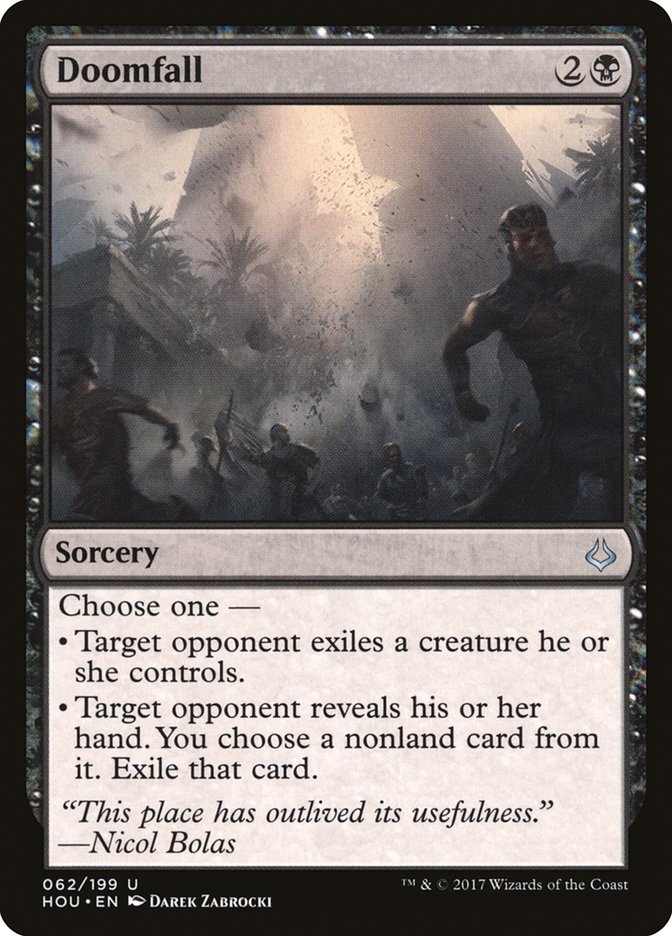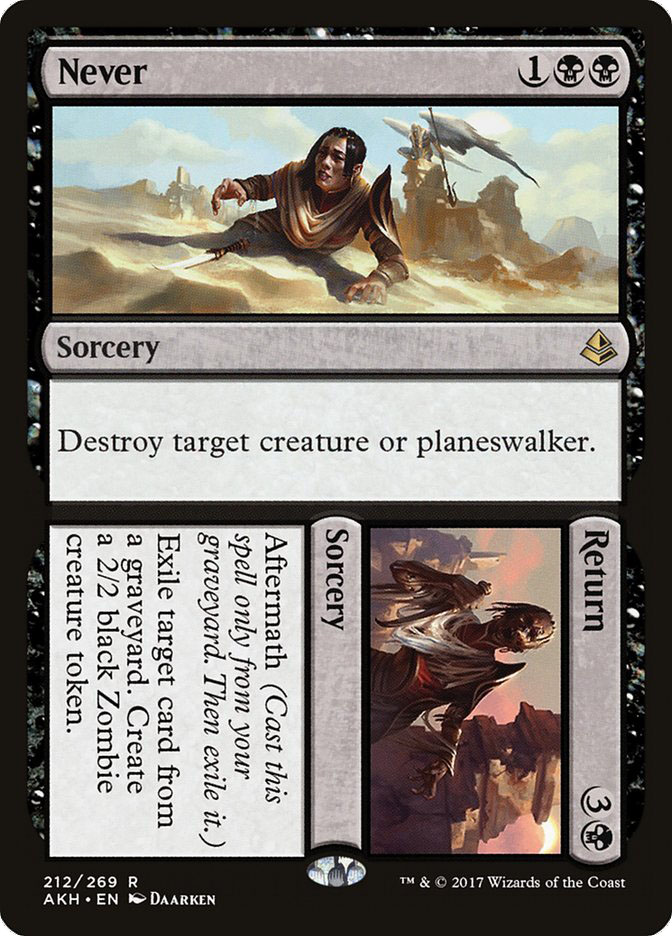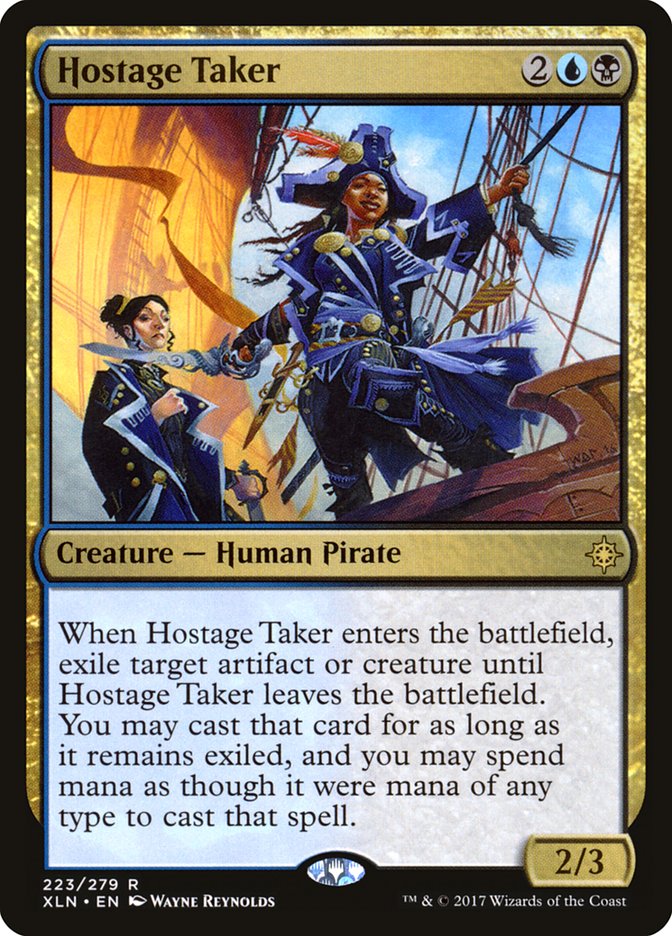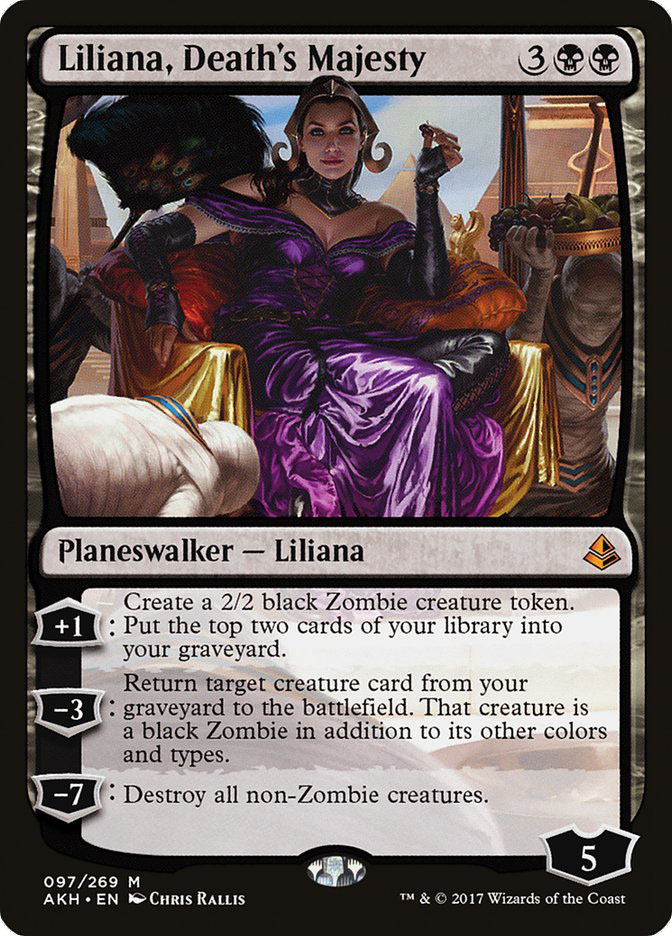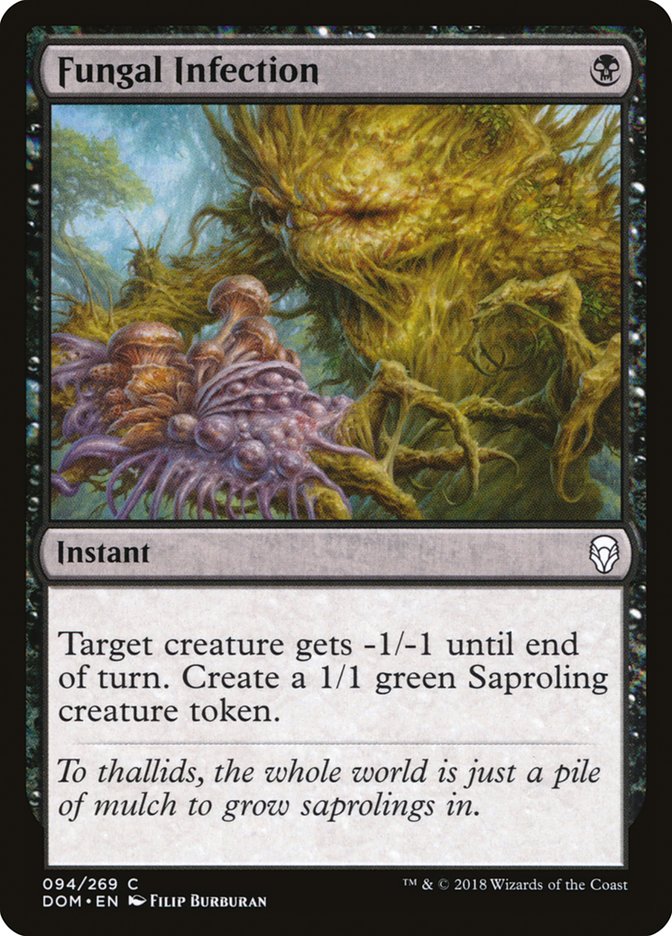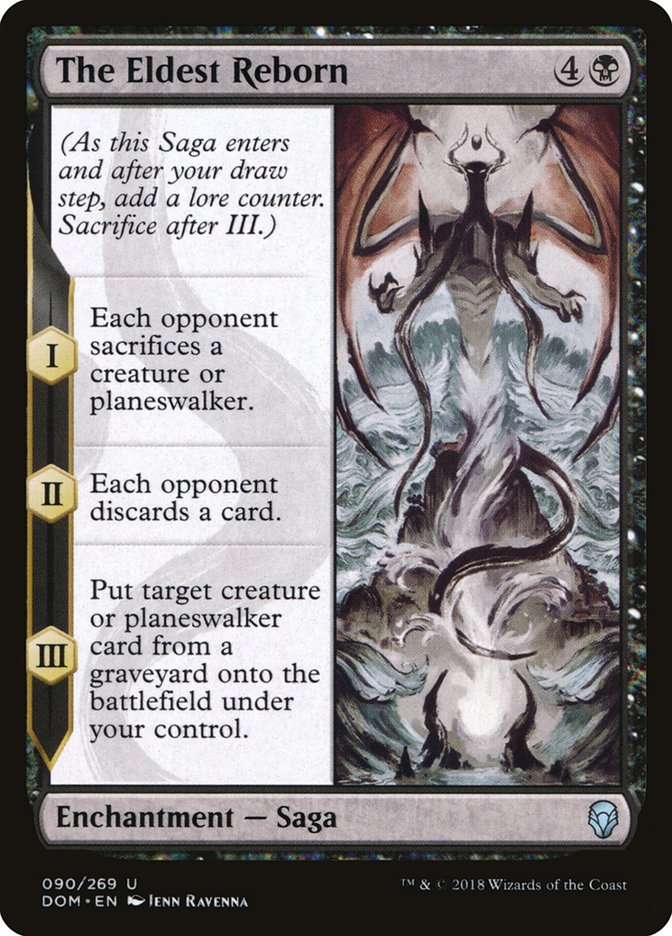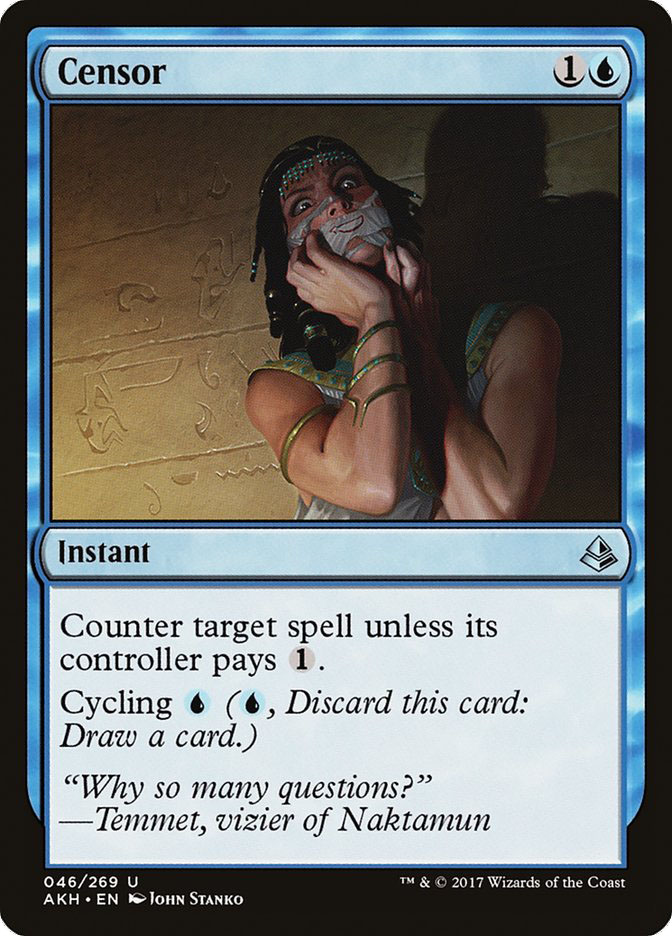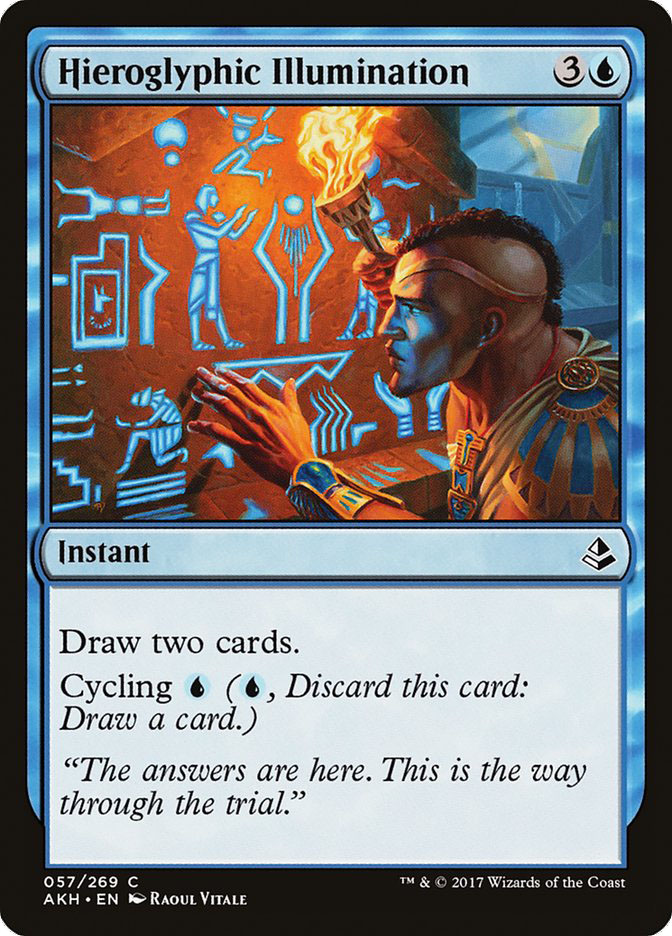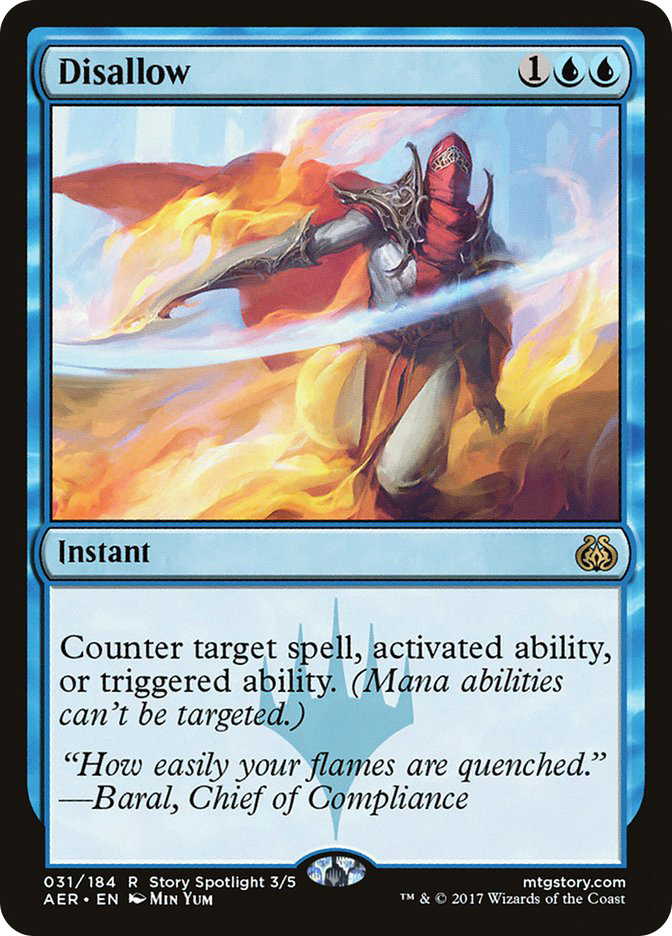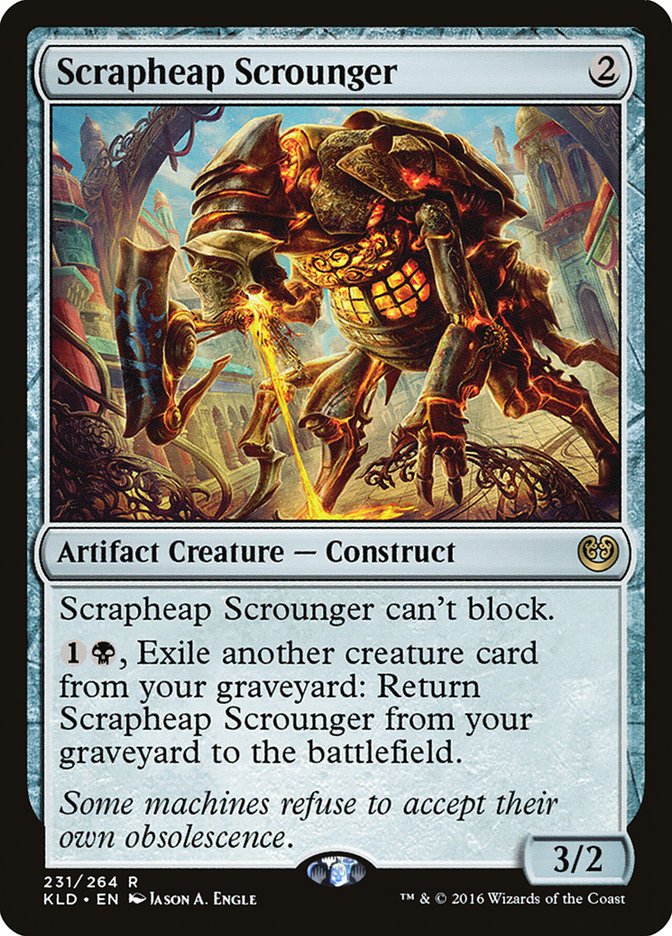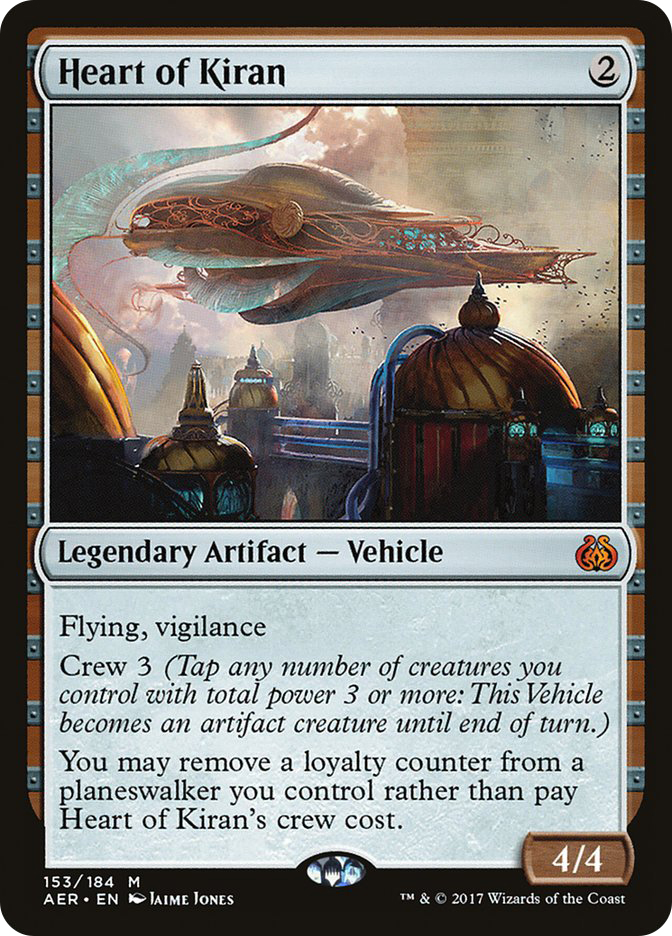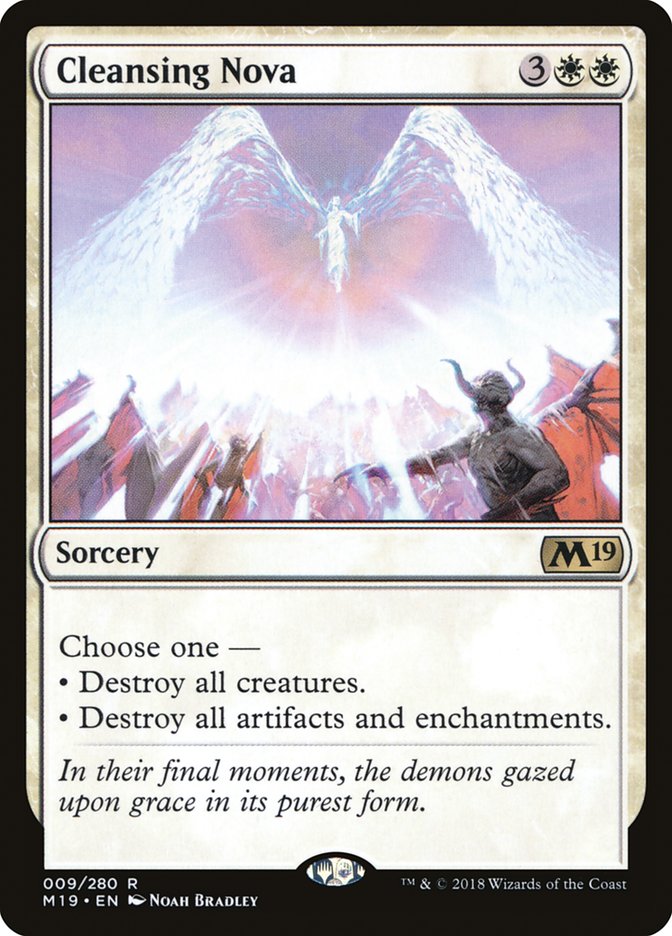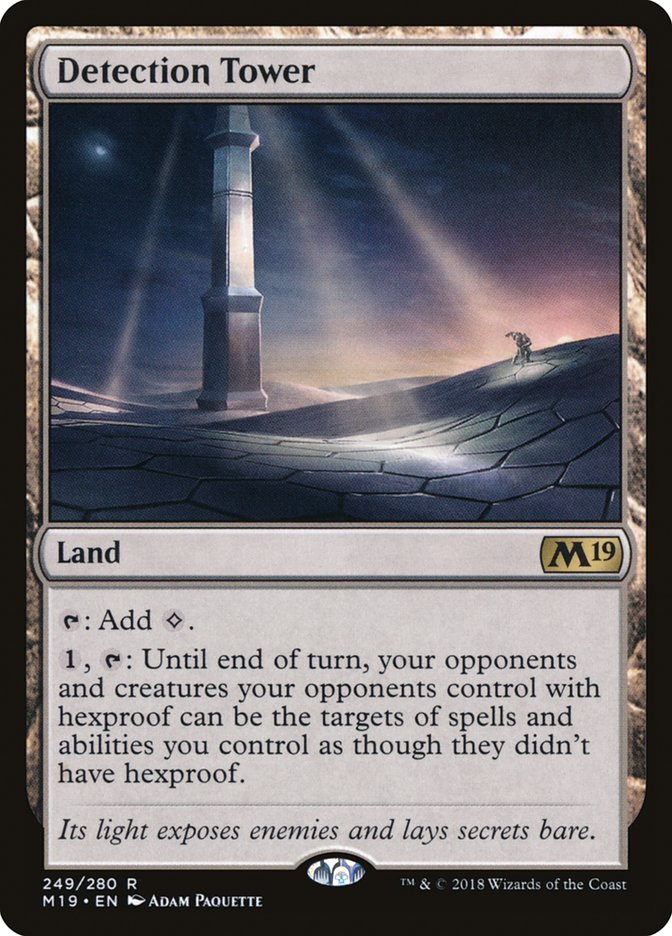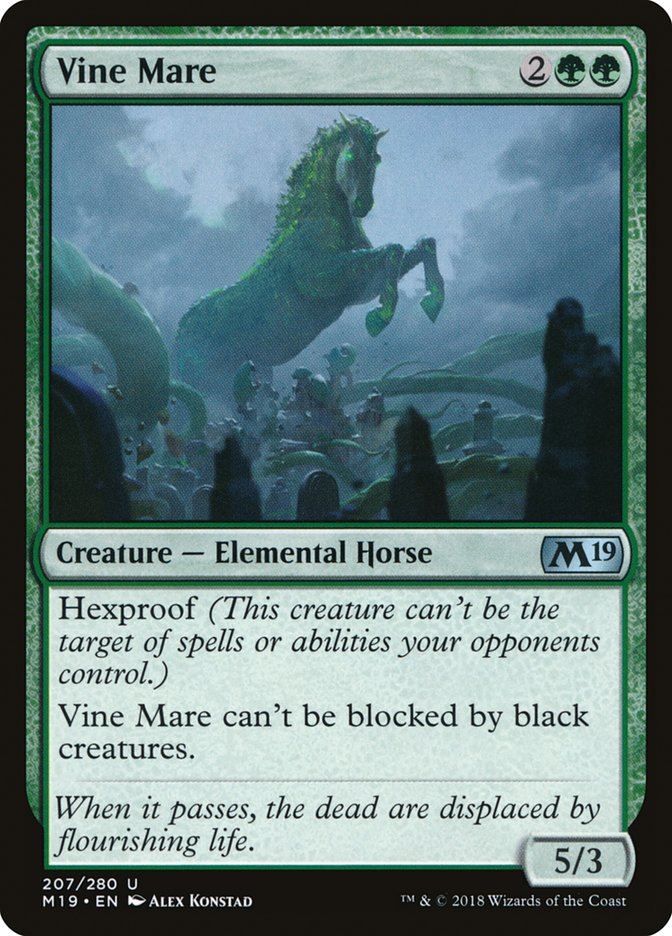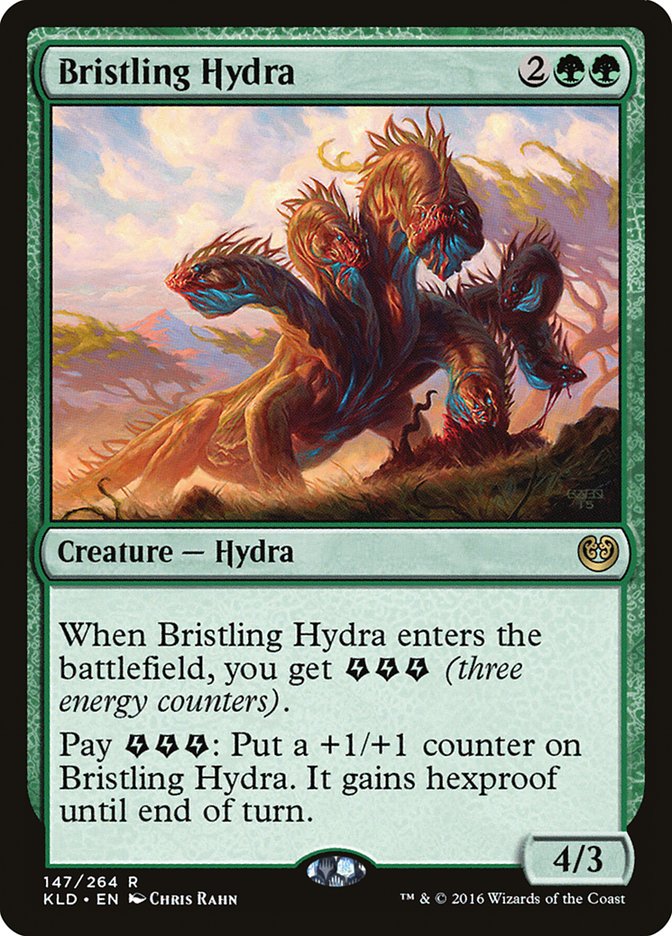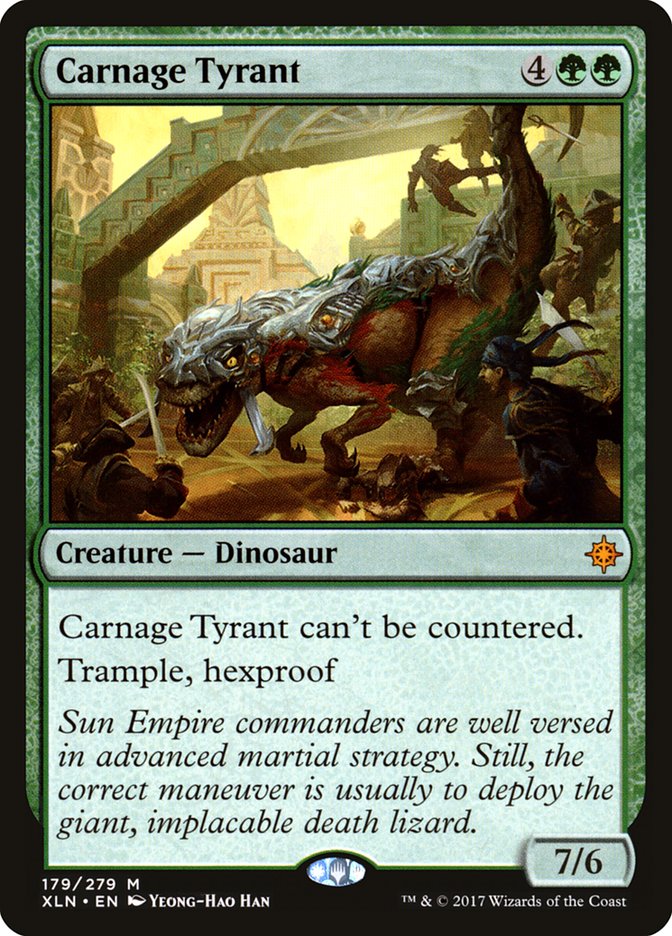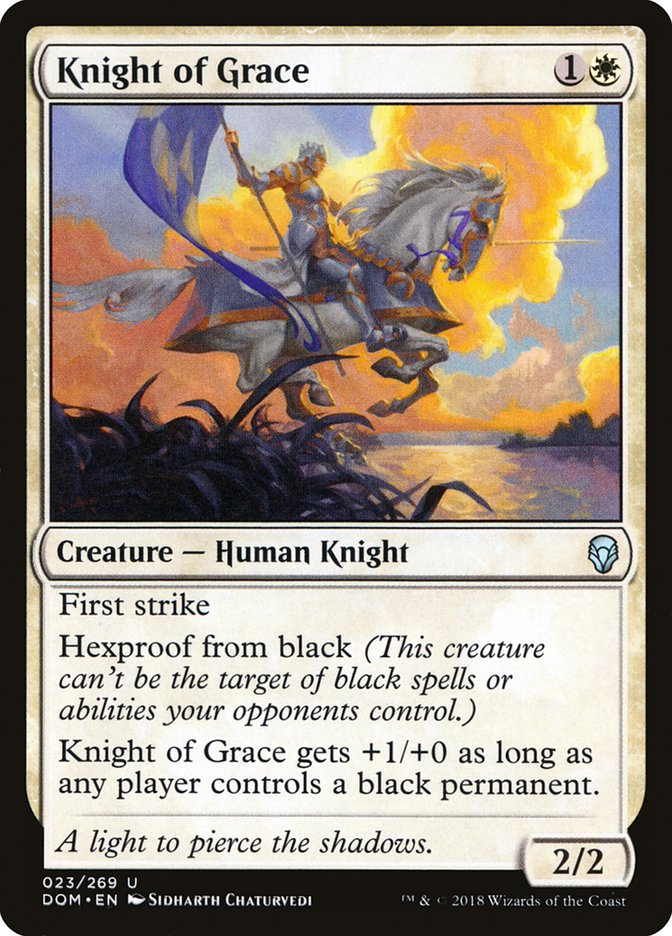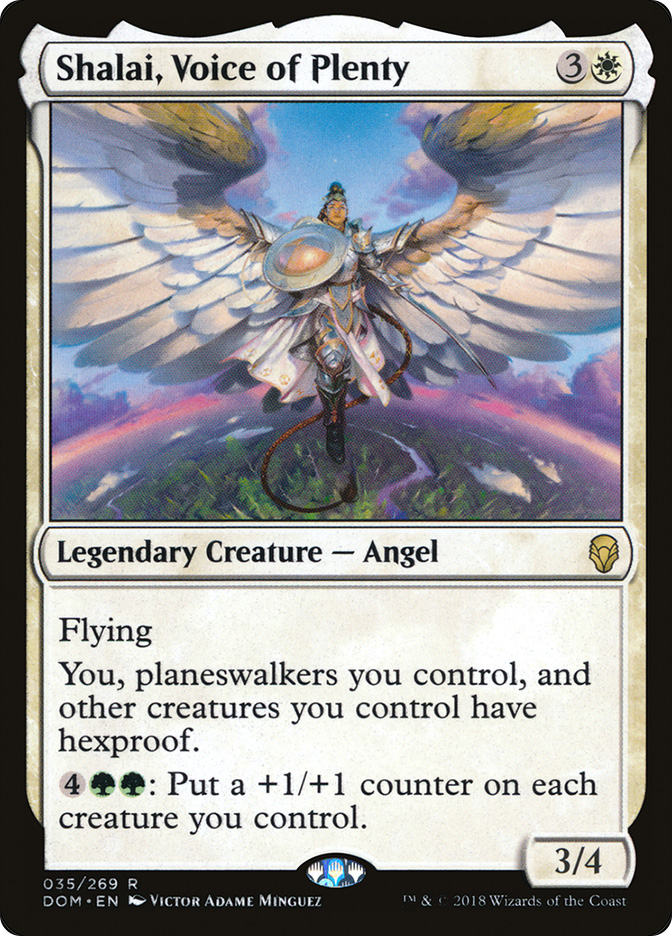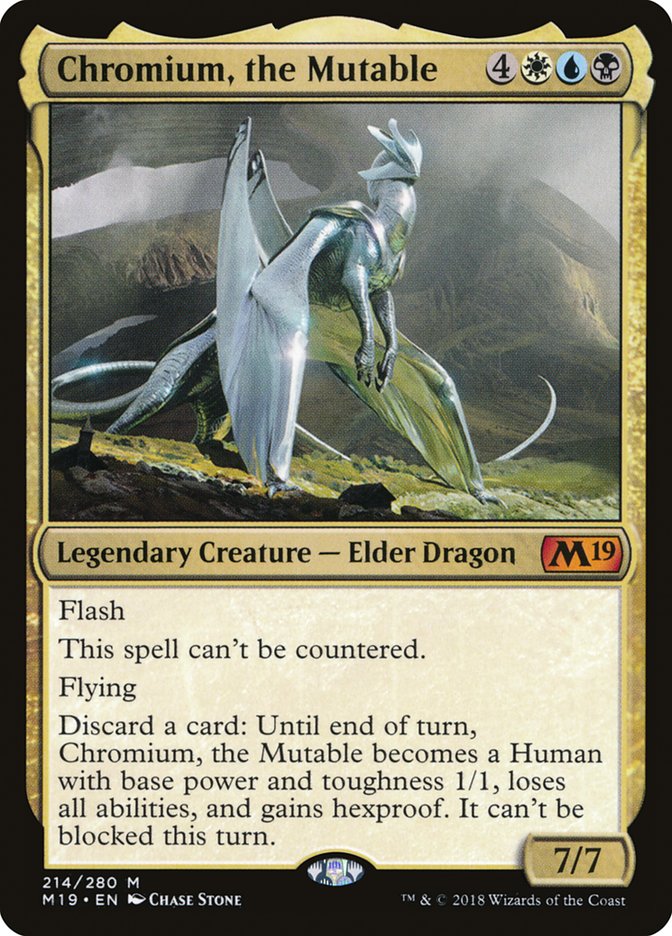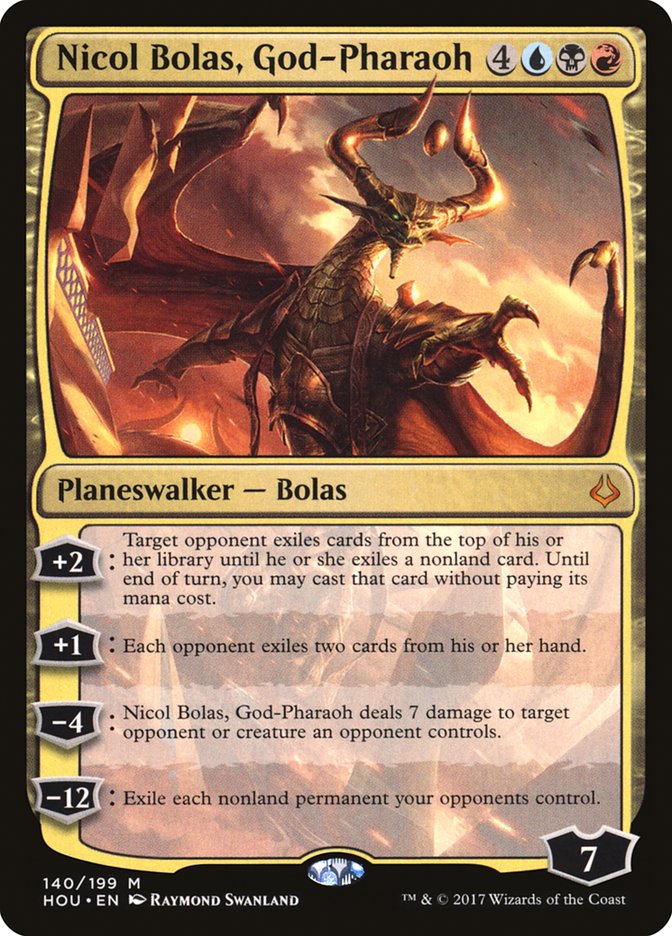Soulless red Chainwhirler decks, with or without the black splash, define
the Standard format at the moment.
While these strategies are not as functionally unbeatable as they
previously were, they definitely dictate the rules of the engagement for
the format and set a very high bar.
For instance, going into round 13 of #GPLA, the top 69 players featured a
full 35 R/x Chainwhirler decks, just over half the metagame. The top 16 of
#GPProvidence included nine Goblin Chainwhirler decks.
Of course, the Goblin Chainwhirler part of the metagame only tells half the
tale (and in this case, basically exactly half). The rest of the field is
comprised nearly entirely of Teferi, Hero of Dominaria and/of Torrential
Gearhulk decks. That GP Providence top 16 above? All the rest of the decks
had one or both. That said, I guess you could also make the same claim
about Teferi and The Scarab God decks.
That #GPLA snapshot, with two rounds to go? Every archetype that was at
least 5% of the field contained at least one of Goblin Chainwhirler,
Teferi, or Torrential Gearhulk (and The Scarab God). Day 2 of the SCG Team
Open included 28 Standard decks. Every single archetype with more than one
pilot relied on at least one of these three pillars.
What have you done for me lately? Amirite?
Okay, sure, there were two outliers in the top 8 of #GPLA, but the top
tables were still way overstocked with the three major strategies described
above.
So, among U/B/x decks (Torrential Gearhulk + The Scarab God), there is this
interesting question of whether to play Glint-Sleeve Siphoner maindeck or
not. After all, it’s not exactly great against the best deck in the format,
R/B.
Last weekend’s Grand Prix Orlando featured two builds of Grixis in the top
8, with the primary difference between them being their use of Glint-Sleeve
Siphoner maindeck or not. One of them, Adam Fox, ran a great example of the
“pro-Glint Sleeve Siphoner maindeck” style. KC Johnson rode an identical
copy to a top 8 finish in this past weekend’s Team Open:
Creatures (15)
- 3 Torrential Gearhulk
- 4 Glint-Sleeve Siphoner
- 2 The Scarab God
- 3 Champion of Wits
- 3 Nicol Bolas, the Ravager
Planeswalkers (1)
Lands (27)
Spells (17)

In contrast, the other top 8 competitor from #GPOrlando running Grixis,
Arseniy Egorov, ran a build with the four Glint-Sleeve Siphoners in the
sideboard and no Search for Azcanta. Instead, Egorov played two copies of
Arguel’s Blood Fast and an eclectic mix of additional forms of interaction
capable of generating card advantage when set up properly.
Additionally, Egorov’s mana involved a few more reliably untapped lands and
a bit less reliable of color availability.
Creatures (9)
Planeswalkers (2)
Lands (27)
Spells (22)

I prefer the Johnson/Fox list above; and even though Glint-Sleeve Siphoner
isn’t good against the best deck, I think it’s still a necessary evil. It’s
just too important for fighting Teferi decks and can be surprisingly good
against Steel Leaf Paladin decks.
I’m also just very strongly in the Magma Spray camp for the obvious
interaction with Scrapheap Scrounger, and to a lesser degree Champion of
Wits.
I don’t mind Syncopate in two-color decks, but I’ve just been finding it a
little too unreliable, even on the play, because of how many tapped lands
we have to play, to make up for how much worse the card is on the draw
(when we need help the most).
Even without Syncopate, though, I think I’d want to try replacing at least
one Drowned Catacomb with another Island. The Johnson/Fox list features
more black mana than needed, and while there’s not a huge opportunity cost
to it, I wouldn’t hate having just a little more untapped land early.
The coolest Grixis list of this past weekend is definitely that of Mitchell
Tamblyn, a great player from a few years back that put a lot of smiles on
faces with his return.
Creatures (15)
- 1 Torrential Gearhulk
- 1 Whirler Virtuoso
- 3 Glint-Sleeve Siphoner
- 3 The Scarab God
- 1 Champion of Wits
- 2 Rekindling Phoenix
- 3 Nicol Bolas, the Ravager
- 1 Isareth the Awakener
Planeswalkers (4)
Lands (27)
Spells (15)

Okay, I’m not playing 61 in this format, but whatever. There’s a lot of
dope stuff here. For instance, instead of three Champion of Wits, like
many, Tamblyn has a one-one-one split along with Whirler Virtuoso and
Isareth the Awakener!
Whirler Virtuoso isn’t exactly known for being a one-of, but I guess it’s
not too crazy. It is a great card and all. The Isareth the Awakener
technology, however? That’s an interesting choice.
Okay, a 3/3 deathtoucher for three is a solid package, albeit slightly
inefficiently distributed. The attack trigger is pretty great, sort of
another Glint-Sleeve Siphoner, I suppose. I can’t help but wonder, however,
if it’s really matching up well enough against the removal people play. I
guess it is better than Champion of Wits against Magma Spray, but surely a
fair bit of the value is coming from its ability to draw out removal.
It seems funny that Tamblyn’s use of Chandra and Rekindling Phoenix is
unusual, but most Grixis players aren’t willing to run twelve four-cost
cards.
Once you’re bending your manabase to support Chandra and Rekindling
Phoenix, it is reasonable to run a Sweltering Suns, instead of a Bontu’s
Last Reckoning, or whatever… Then again, you could just do what Tamblyn
did and run two of each! It’s also just one of the best ways to fight the
recent growing trend of Wizard’s Lightning red decks that attack faster
than other red decks. Additionally, it’s obviously a lot less dead of a
card against Teferi decks than a lot of removal spells would be.
One of the things I really like about Tamblyn’s list is the lack of
Harnessed Lightning. Like, why do so many people play that card still? If
basically everybody is playing Chainwhirler, Teferi, or Torrential
Gearhulk/The Scarab God, where do you actually want the Harnessed
Lightning? I guess it kills Nicol Bolas, the Ravager sometimes?
Of course, once you start down this road, it brings up some interesting
questions, right? I mean, sure, if we’re just using more Abrades, or
whatever, no biggie, but the more we adopt Fatal Push, Cast Down, Doomfall,
Never, and maybe Hostage Taker, the more we’ve got to ask ourselves, “Why
are we even Grixis?”
After all, the idea of playing eighteen lands that always enter the
battlefield untapped is kind of appealing, right?
Brennan DeCandio’s finalist list from the Team Open is a B/U Midrange deck
that’s basically just the Grixis deck with more black removal instead of
red removal, with Hostage Taker instead of Nicol Bolas.
Creatures (15)
Planeswalkers (2)
Lands (26)
Spells (17)

Brennan’s list is nearly identical to Corey Burkhart’s top 8 list from
#GPOrlando, with just a few small updates. He’s got two Hostage Takers
instead of the one-one split with Ravenous Chupacabra that Corey played.
He’s also got a second Liliana, Death’s Majesty, in lieu of the miser’s
Commit plus the Fungal Infections, where Corey had his second Arguel’s
Blood Fast maindeck along with a Moment of Craving and an extra Duress in
the sideboard.
Edgar Magalhaes top 8’ed GP Providence with a similar list, but cutting the
Lilianas for a Glimmer of Genius and a The Eldest Reborn.
Creatures (12)
Lands (26)
Spells (22)

Of course, each creature and planeswalker cut takes us one step closer to
U/B Control…
It really wasn’t that long ago, was it?
Of course, for Andrew Cuneo, control is always in season, and his top 8 in
Providence looked impressive.
Creatures (5)
Lands (26)
Spells (29)

Infernal Reckoning has really come into its own as a sideboard card against
Scrapheap Scrounger.
While the card is more narrow than Magma Spray, its biggest advantage is
being playable in non-red decks. Besides, an extra three life can go a long
way. Additionally, the card is going to sit inactive a bit more, but it
does have some quality options that Magma Spray doesn’t always have, such
as reliably hitting Heart of Kiran or Walking Ballista (regardless of size,
even if they’re going to shoot you in response, meaning no lifegain).
This approach has also been popular in Esper, and Cuneo’s list is actually
a lot like the Dezani/Wafo style of Esper that had so much success last
weekend, except without splashing white for Teferi.
This weekend, there was definitely a shift towards more players sticking to
just U/B or just U/W. For reference, however, here’s the list former player
of the year Jeremy Dezani won #GPBrussels with last weekend:
Creatures (4)
Planeswalkers (3)
Lands (27)
Spells (26)

Wafo differed a little from the other two Esper players in the top 8 of
Brussels, Dezani, and Arne Huschenbeth. Instead of using Chromium, the
Mutable as an added post-sideboard victory condition, he returned to The
Scarab God.
Instead of Yahenni’s Expertise, he had access to a copy of Cleansing Nova,
despite just ten sources of white (or eleven, with Field of Ruin).
Creatures (4)
Planeswalkers (3)
Lands (27)
Spells (26)

Interestingly, both Dezani and Wafo chose to sideboard a Detection Tower as
a 28th land.
Detection Tower’s primary applications are against the several green
hexproof or hexproof from black threats the Steel Leaf decks have access
to, as well as Knight of Grace, Shalai, Voice of Plenty, and of course,
opposing Chromiums.
On the American front, Andrew Calderon’s top 4 list featured a prominent
increase in white, with Seal Away, Settle the Wreckage, and Fumigate. He
even had a Lyra Dawnbringer in the sideboard to go alongside Chromium the
Mutable, for his added threats (despite having made room for a The Scarab
God maindeck by trimming a Torrential Gearhulk).
Creatures (4)
Planeswalkers (3)
Lands (27)
Spells (26)

Finally, I would be remiss if I didn’t give an example of the U/W Control
decks that have continued to gain in popularity after Greg Orange’s amazing
performance two weeks ago.
Here’s Oliver Tiu’s take on the archetype, his second finals appearance
this year:
Creatures (2)
Planeswalkers (4)
Lands (26)
Spells (28)

While I think this is definitely a reasonable way to play Teferi, for my
dollar, I’m sticking with B/U/x this weekend. I could be talked into U/B
Control, I think, but for now, my plan is Grixis:
Creatures (15)
- 3 Torrential Gearhulk
- 4 Glint-Sleeve Siphoner
- 2 The Scarab God
- 3 Champion of Wits
- 3 Nicol Bolas, the Ravager
Planeswalkers (1)
Lands (27)
Spells (17)

It’s a great time to serve Nicol Bolas!
Of course, it’s always a great time to serve Nicol Bolas.
Is it time?!



